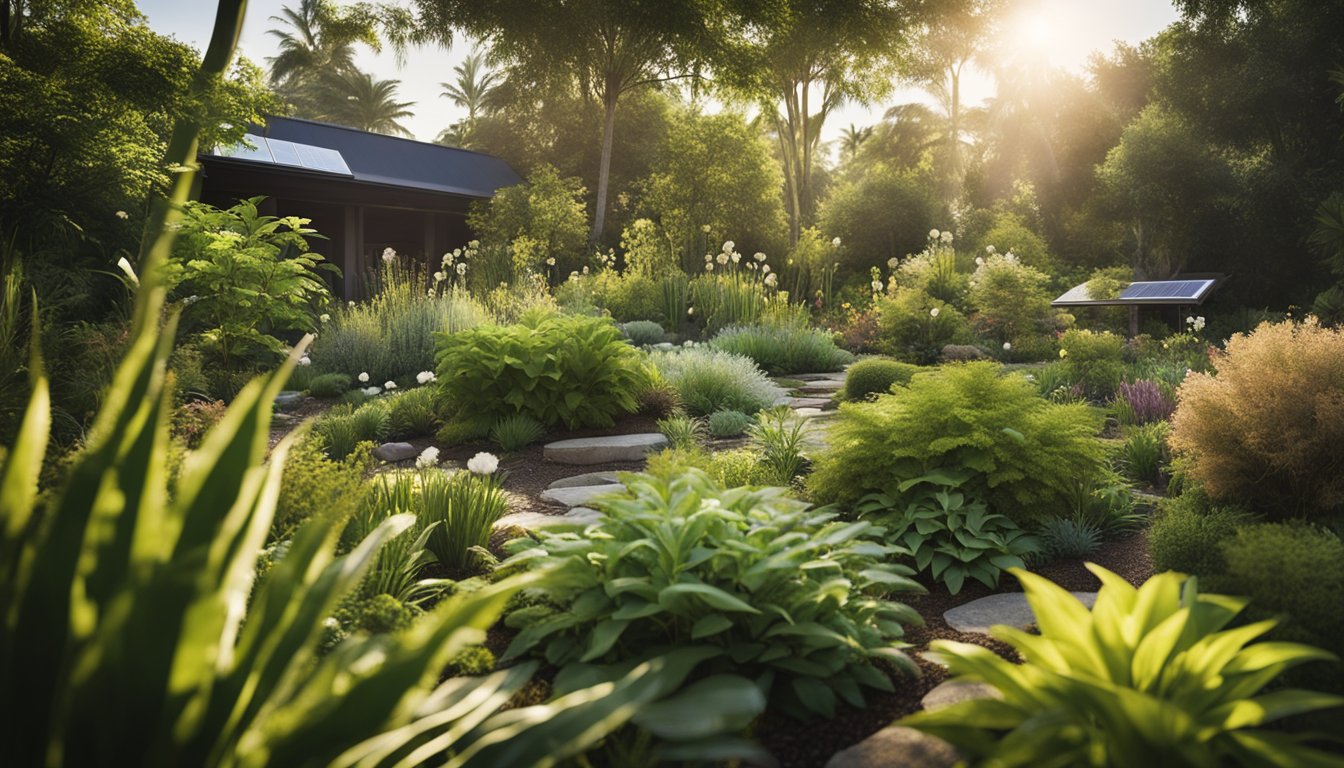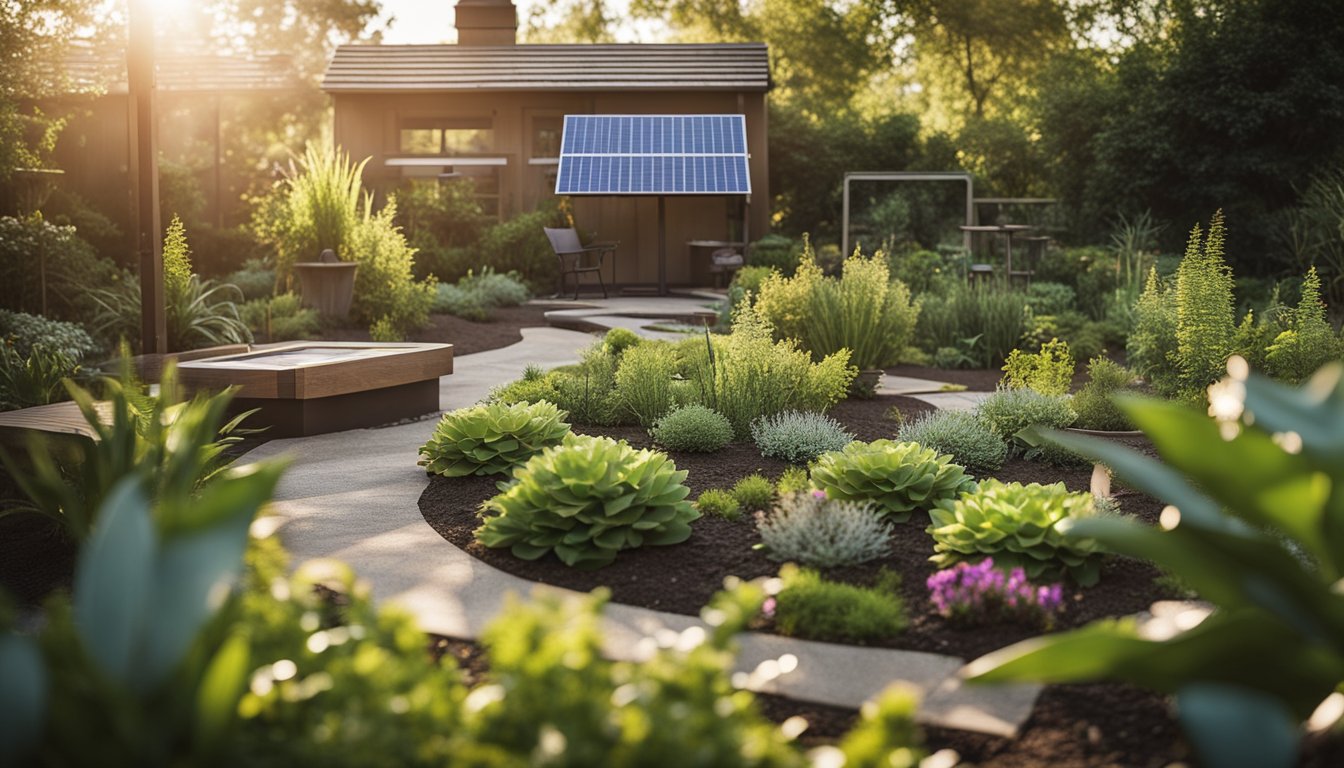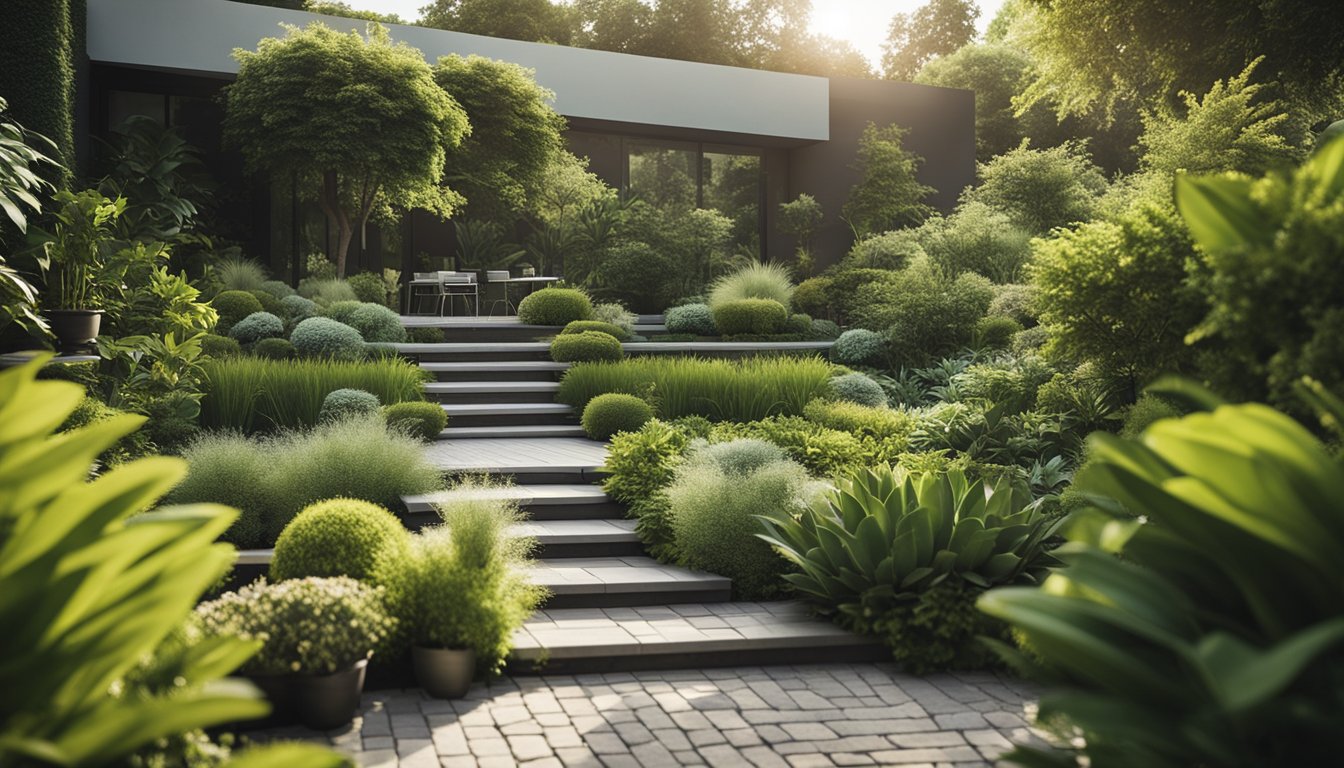Late updated: 12 Apr 2025 15:04
Written by: James Whitaker
Future Trends in Sustainable Garden Design: Innovations and Practices
Sustainable garden design is an exciting field that combines the beauty of nature with the urgency of environmental responsibility. As climate change continues to reshape our ecosystems, the demand for gardens that respect and preserve our planet is growing. The future of garden design lies in creating harmonious spaces that enhance biodiversity while being mindful of resource consumption. This trend is not limited to large spaces; urban gardens, too, are becoming key players in promoting sustainability.

Incorporating native plants is a crucial strategy in sustainable gardening. These species require less water and care, supporting local wildlife and reducing the garden's ecological footprint. Recycled and upcycled materials are also increasingly popular, offering creative solutions that cut waste and reduce environmental impact. Such innovations help create aesthetically pleasing spaces that reflect our commitment to sustainability.
Water features add tranquillity and charm but must be designed responsibly to align with sustainable practices. Naturalistic designs help conserve water and fit seamlessly into eco-friendly landscapes. By embracing these trends, we cultivate not just gardens, but partnerships with the environment that benefit both people and nature.
Key Takeaways
- Sustainable gardens enhance biodiversity and conserve resources.
- Native plants and recycled materials are central to eco-friendly landscapes.
- Water features should be designed to support sustainable practices.
Sustainable Plant Choices
In our exploration of sustainable garden design, choosing the right plants is crucial. Emphasising native species and drought-resistant varieties allows us to create vibrant landscapes that support biodiversity while addressing climate challenges.
Native Plants and Biodiversity
Native plants play a vital role in enhancing biodiversity. By incorporating them into our gardens, we are promoting ecosystems that support local wildlife, including pollinators like bees and butterflies. These plants, adapted to local climates and soils, require fewer resources such as water and fertilisers.
For example, in the UK, species like Primula vulgaris (common primrose) or Digitalis purpurea (foxglove) are excellent choices. They provide natural habitats for various insects and birds, fostering a balanced garden ecosystem. The focus on native species not only enhances biodiversity but also contributes to more sustainable gardening practices by promoting a self-sufficient natural environment.
Drought-Resistant Varieties
As climate change leads to more frequent droughts, selecting drought-tolerant plants is imperative. These plants reduce the need for extensive watering, making garden maintenance more sustainable. Succulents, such as Sedum and Sempervivum, thrive with minimal water, making them ideal for dry areas.
Incorporating Mediterranean herbs like lavender and rosemary can also enhance edible gardens without demanding regular irrigation. These plants are not only resilient but bring aromatic and culinary benefits to our outdoor spaces. Drought-resistant varieties reduce resource consumption and ensure that gardens can withstand extreme weather, aligning with sustainable landscape management. By integrating these plant choices, we create resilient gardens that flourish in varied conditions, ensuring sustainability and beauty.
Design Elements for Sustainability

Our approach to sustainable garden design marries aesthetics with environmental responsibility. By incorporating innovative water features and utilising eco-friendly materials, we can create gardens that reduce carbon footprints and promote biodiversity.
Innovative Water Features
Water features bring tranquillity to gardens, yet they must also be sustainable. Rainwater harvesting systems are vital, capturing rain for garden use and reducing demand on city water supplies. Solar-powered fountains offer elegance with minimal energy usage, aligning with efforts to decrease the carbon footprint.
Incorporating biodegradable filtration systems ensures water remains clean naturally. These accomplish not only sustainability goals but also support biodiversity by creating habitats for aquatic life. Selecting native aquatic plants further enhances these ecosystems.
Eco-Friendly Materials and Furniture
Sustainable garden design requires us to reconsider materials. Using recycled and upcycled materials for garden furniture and décor lessens environmental impact. For instance, benches made from reclaimed wood or old metal can be both functional and visually appealing.
Choosing locally sourced materials reduces transport emissions. Bamboo and responsibly sourced timber make excellent choices, as they are both renewable resources. Gravel gardens also contribute by replacing water-intensive lawns, providing a low-maintenance and drought-resistant option.
Organic Gardening Practices
Organic gardening practices are key to sustainability. By utilising organic fertilisers and natural pest control, we can maintain healthy plant growth without harming the environment. Composting organic waste is an excellent method to enrich soil, closing the nutrient loop.
Planting native species is essential, as they require less water and support local biodiversity. These plants adapt well to local climates, helping us mitigate climate change impacts. Together, these practices promote robust ecosystems and improved soil health.
Integration with Outdoor Living Spaces
Integrating gardens with outdoor living spaces shapes a multifunctional environment, allowing us to enjoy nature while still being mindful of sustainability. Fire pits made from sustainable materials provide warmth and ambience, enhancing usability of outdoor areas year-round.
Incorporating energy-efficient lighting and solar-powered features supports a garden’s functionality without increasing energy consumption. Such elements create harmonious spaces, seamlessly blending relaxation with eco-conscious design. Thoughtful integration maximises usability and minimises our ecological footprint.
Frequently Asked Questions

Modern sustainable garden design is evolving with a focus on eco-friendly practices and technologies. Native plants, water conservation, and support for local biodiversity are key elements. Let's explore these concepts further.
How can we incorporate native plants into modern garden designs?
Incorporating native plants brings a sense of place and ecology to our gardens. They are well adapted to local conditions, reducing the need for excessive water or chemical inputs. We can select varieties that complement our specific climate and soil, adding a natural aesthetic while supporting local wildlife.
What are the best practices for water conservation in garden landscaping?
Effective water conservation involves integrating drought-tolerant plants and using advanced irrigation techniques. Drip irrigation systems and rainwater harvesting can significantly reduce water usage. Mulching helps retain soil moisture, ensuring plants receive adequate hydration while minimising waste.
How can urban gardens contribute to sustainability?
Urban gardens can transform unused spaces into vibrant green areas. They help mitigate urban heat, support biodiversity, and improve air quality. By using vertical gardening or rooftop gardens, we can maximise space and strengthen the green footprint of cities.
What role do pollinator-friendly plants play in eco-friendly gardens?
Pollinator-friendly plants are crucial for sustaining local ecosystems. They attract bees, butterflies, and other pollinators, ensuring the pollination of plants and the production of fruits and seeds. Including a mix of flowering plants that bloom at different times can support a diverse pollinator population throughout the year.
What are the emerging technologies in garden irrigation for reducing waste?
Innovative technologies in irrigation, such as smart systems and soil moisture sensors, are reducing water waste. These systems adjust watering schedules based on weather conditions and soil needs, optimising efficiency. Such technology ensures that plants receive the right amount of water, boosting both sustainability and convenience.
In what ways can garden design support local biodiversity?
Support for local biodiversity begins with choosing a variety of native and non-invasive plant species. Designing habitats like ponds or rock gardens enhances the living environment for many creatures. By avoiding chemical pesticides, we create a healthier ecosystem where plants and animals can thrive naturally.
